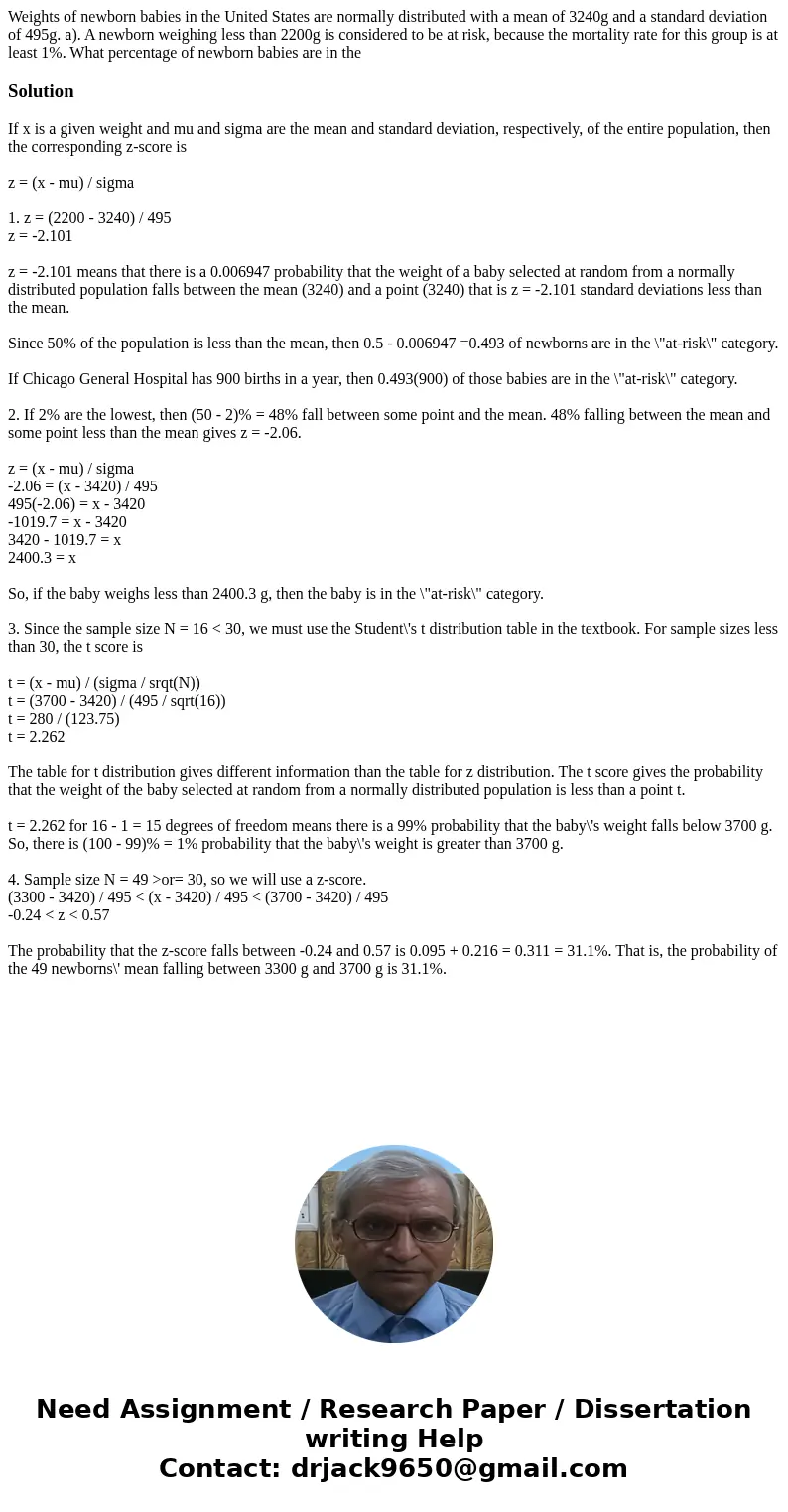Weights of newborn babies in the United States are normally
Weights of newborn babies in the United States are normally distributed with a mean of 3240g and a standard deviation of 495g. a). A newborn weighing less than 2200g is considered to be at risk, because the mortality rate for this group is at least 1%. What percentage of newborn babies are in the
Solution
If x is a given weight and mu and sigma are the mean and standard deviation, respectively, of the entire population, then the corresponding z-score is
z = (x - mu) / sigma
1. z = (2200 - 3240) / 495
z = -2.101
z = -2.101 means that there is a 0.006947 probability that the weight of a baby selected at random from a normally distributed population falls between the mean (3240) and a point (3240) that is z = -2.101 standard deviations less than the mean.
Since 50% of the population is less than the mean, then 0.5 - 0.006947 =0.493 of newborns are in the \"at-risk\" category.
If Chicago General Hospital has 900 births in a year, then 0.493(900) of those babies are in the \"at-risk\" category.
2. If 2% are the lowest, then (50 - 2)% = 48% fall between some point and the mean. 48% falling between the mean and some point less than the mean gives z = -2.06.
z = (x - mu) / sigma
-2.06 = (x - 3420) / 495
495(-2.06) = x - 3420
-1019.7 = x - 3420
3420 - 1019.7 = x
2400.3 = x
So, if the baby weighs less than 2400.3 g, then the baby is in the \"at-risk\" category.
3. Since the sample size N = 16 < 30, we must use the Student\'s t distribution table in the textbook. For sample sizes less than 30, the t score is
t = (x - mu) / (sigma / srqt(N))
t = (3700 - 3420) / (495 / sqrt(16))
t = 280 / (123.75)
t = 2.262
The table for t distribution gives different information than the table for z distribution. The t score gives the probability that the weight of the baby selected at random from a normally distributed population is less than a point t.
t = 2.262 for 16 - 1 = 15 degrees of freedom means there is a 99% probability that the baby\'s weight falls below 3700 g. So, there is (100 - 99)% = 1% probability that the baby\'s weight is greater than 3700 g.
4. Sample size N = 49 >or= 30, so we will use a z-score.
(3300 - 3420) / 495 < (x - 3420) / 495 < (3700 - 3420) / 495
-0.24 < z < 0.57
The probability that the z-score falls between -0.24 and 0.57 is 0.095 + 0.216 = 0.311 = 31.1%. That is, the probability of the 49 newborns\' mean falling between 3300 g and 3700 g is 31.1%.

 Homework Sourse
Homework Sourse